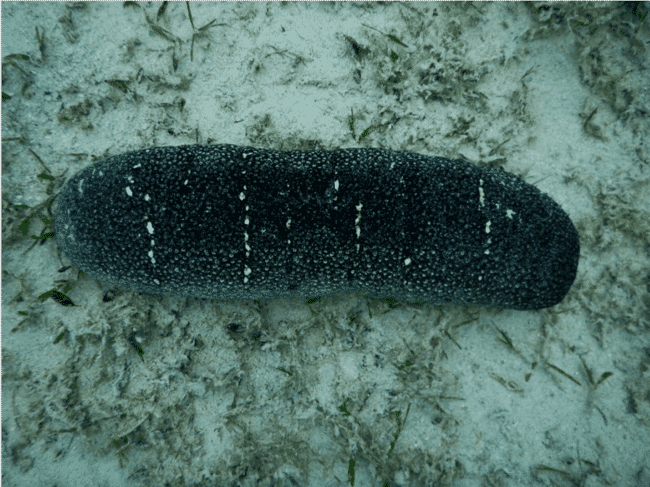Scientists from the University of Algarve’s Centro do Ciências do Mar (CCMAR), investigated the use of debris from two different species of seagrass – Zostera noltii and Cymodocea nodosa – as food sources for broodstock of the sea cucumber species Holothuria arguinensis during breeding periods.

© SAMS
The work was undertaken due to address a key gap in the knowledge of the culture of this species, which became the first sea cucumber species to be cultured in Europe, in 2014.
The sea cucumbers were given feed equivalent to 30 percent of the tanks’ total sea cucumber biomass each week. Feed rations of seagrass and sediment were then calculated from this value, according to the following percentages: 40% sediment, 15% Z. noltii, 40% Z. noltii, 15% C. nodosaand 40% C. nodosa.
The researchers noted that H. arguinensis fed with diets containing 40 percent Z. noltii showed the highest growth (specific growth rate = 0.09 ± 0.06%/day, absolute growth rate = 0.11 ± 0.07 g/day), increasing their final weight to 5.86 ± 3.57% in 57 days. However, the individuals fed with C. nodosa lost weight.
H. arguinensis showed a reduction in its feeding rate as the organic matter content in the diets increased. However, the sea cucumbers did not show any important change relating to proximate composition, protein, lipid, mineral contents and fatty acids profile among the feeding groups, or in comparison with individuals collected from the wild.
As a result, the researchers conclude that: “H. arguinensis could be fed with Z. noltii debris during tanks maintenance along breeding period, ensuring its growth and maintaining its nutritional profile.”
An abstract of the study, which was published in Aquaculture Research under the title “Seagrass debris as potential food source to enhance Holothuria arguinensis' growth in aquaculture”, can be accessed here.



